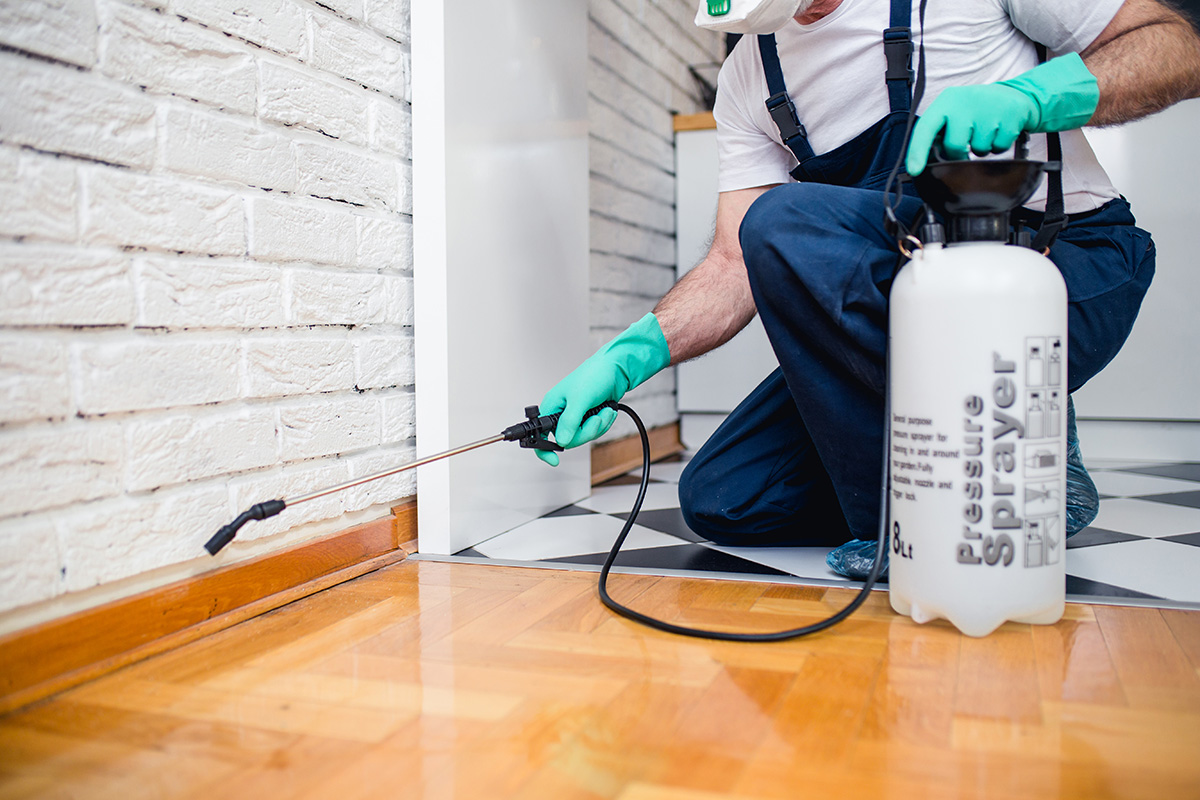A1 Bed Bug Exterminator Charlotte - Effective and Budget-friendly Services
A1 Bed Bug Exterminator Charlotte - Effective and Budget-friendly Services
Blog Article
Bed Bug Treatment Break Down: Comparing Chemical Vs. Non-Chemical Solutions
In the world of insect control, especially when managing the relentless concern of bed pests, the option between chemical and non-chemical therapy options can be a critical one. Both methods offer distinctive benefits and disadvantages, affecting elements such as effectiveness, security considerations, and total cost. By examining the nuanced details of each method, a more clear understanding of which course to seek in resolving a bed insect invasion can be attained.
Efficiency of Chemical Therapies
Chemical treatments for bed insect infestations have actually been extensively recognized for their quick and powerful efficacy in removing these bugs. When considering the efficiency of chemical treatments, it is critical to understand that they can give a comprehensive and quick service to a bed pest problem. Specialist pest control experts commonly depend on pesticides to target bed bugs at different stages of their life cycle, consisting of eggs, nymphs, and grownups. These chemicals usually work by disrupting the bed insects' worried system, resulting in paralysis and ultimate death.
Moreover, chemical treatments have the benefit of supplying residual effects, suggesting that they can remain to get rid of bed bugs also after the preliminary application. This recurring action is especially useful in combating any type of potential re-infestations. Additionally, the rapid activity of chemical therapies can bring relief to individuals encountering serious bed pest invasions, allowing them to reclaim control of their home quickly.
Safety And Security Worry About Chemical Solutions
One important facet that needs careful consideration when utilizing chemical options for bed insect therapy is making certain the safety of occupants and the environment. Direct exposure to certain chemicals utilized in bed bug therapies can lead to respiratory system issues, skin inflammation, or other adverse reactions, especially in individuals with pre-existing problems or sensitivities.
Additionally, the ecological influence of chemical services is an additional considerable factor to consider. Some pesticides utilized in bed pest therapies may be hazardous to helpful pests, wildlife, and communities if they leach into the dirt or water systems. It is necessary to utilize chemical therapies judiciously, complying with safety and security guidelines, and taking into consideration much less harmful options to minimize these dangers and make sure the safe and efficient administration of bed bug problems.
Benefits of Non-Chemical Techniques
Thinking about the prospective safety and security concerns and environmental impact associated with chemical solutions for bed pest treatment, look at this website discovering non-chemical techniques provides a promising option with numerous distinctive advantages. Non-chemical therapies are eco pleasant, as they do not add to air or water pollution, making them a sustainable option for bug control.
Additionally, non-chemical options can be effective in targeting bed bugs, consisting of hard-to-reach locations where chemical treatments may not penetrate. Approaches such as warmth treatment, vacuuming, steam cleaning, and bed mattress coverings offer detailed removal without the usage of dangerous chemicals. Additionally, non-chemical techniques can be less disruptive, requiring marginal prep work and permitting quicker reentry into dealt with areas. Generally, going with non-chemical bed pest therapy techniques not just focuses on safety and security and ecological protection however additionally guarantees efficient and extensive bug control.
Limitations of Non-Chemical Treatments

Additionally, non-chemical treatments usually need multiple applications to attain effective elimination. This can be time-consuming and may not constantly guarantee total elimination of i thought about this all bed bugs and their eggs, especially in hard-to-reach or hidden locations.
Additionally, the success of non-chemical therapies greatly counts on appropriate execution and thoroughness, which can be testing for individuals without professional know-how. Inadequate application of non-chemical methods might lead to incomplete obliteration, resulting in consistent invasions and the demand for added therapies.
Therefore, while non-chemical treatments have their benefits, it is important to recognize these constraints and consider them when identifying one of the most effective method for taking care of bed insect infestations.
Cost Comparison: Chemical Vs. Non-Chemical Options
Given the restrictions connected with non-chemical therapies, an essential element to evaluate in the context of bed bug administration is the price comparison in between chemical and non-chemical alternatives. In contrast, non-chemical treatments like warmth treatment or steam can be a lot more pricey, with costs varying from $1,000 to $6,000 for an entire home. While the first cost of chemical treatments might seem lower, numerous treatments might be needed to completely get rid of the invasion, potentially enhancing the total price.
Final Thought

Taking into consideration the possible security concerns and ecological influence associated with chemical services for bed pest therapy, discovering non-chemical techniques presents a promising alternative with numerous distinctive advantages.Provided the constraints linked with non-chemical treatments, an important aspect to examine in the context of bed insect management is the price comparison between chemical and non-chemical choices. In comparison, non-chemical therapies like warmth treatment or steam can be a lot more expensive, with expenses ranging from $1,000 to $6,000 for a whole home. While the preliminary cost of chemical therapies may appear lower, multiple therapies may be needed to fully remove the infestation, possibly boosting the overall cost.In final thought, when comparing chemical and non-chemical bed insect treatment options, it is crucial to consider effectiveness, go to this website safety and security, benefits, constraints, and cost.
Report this page